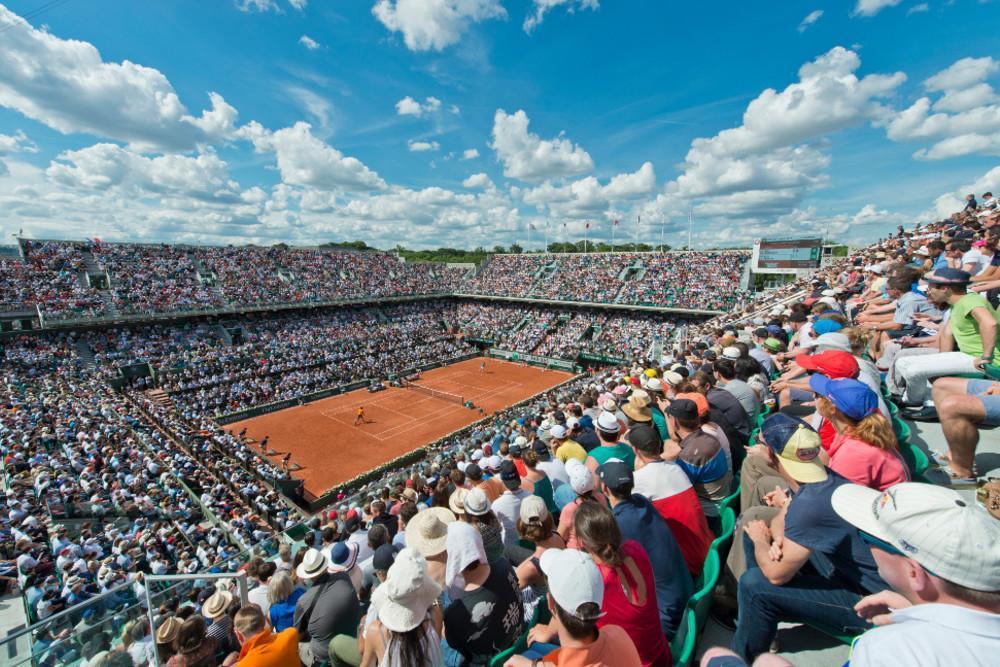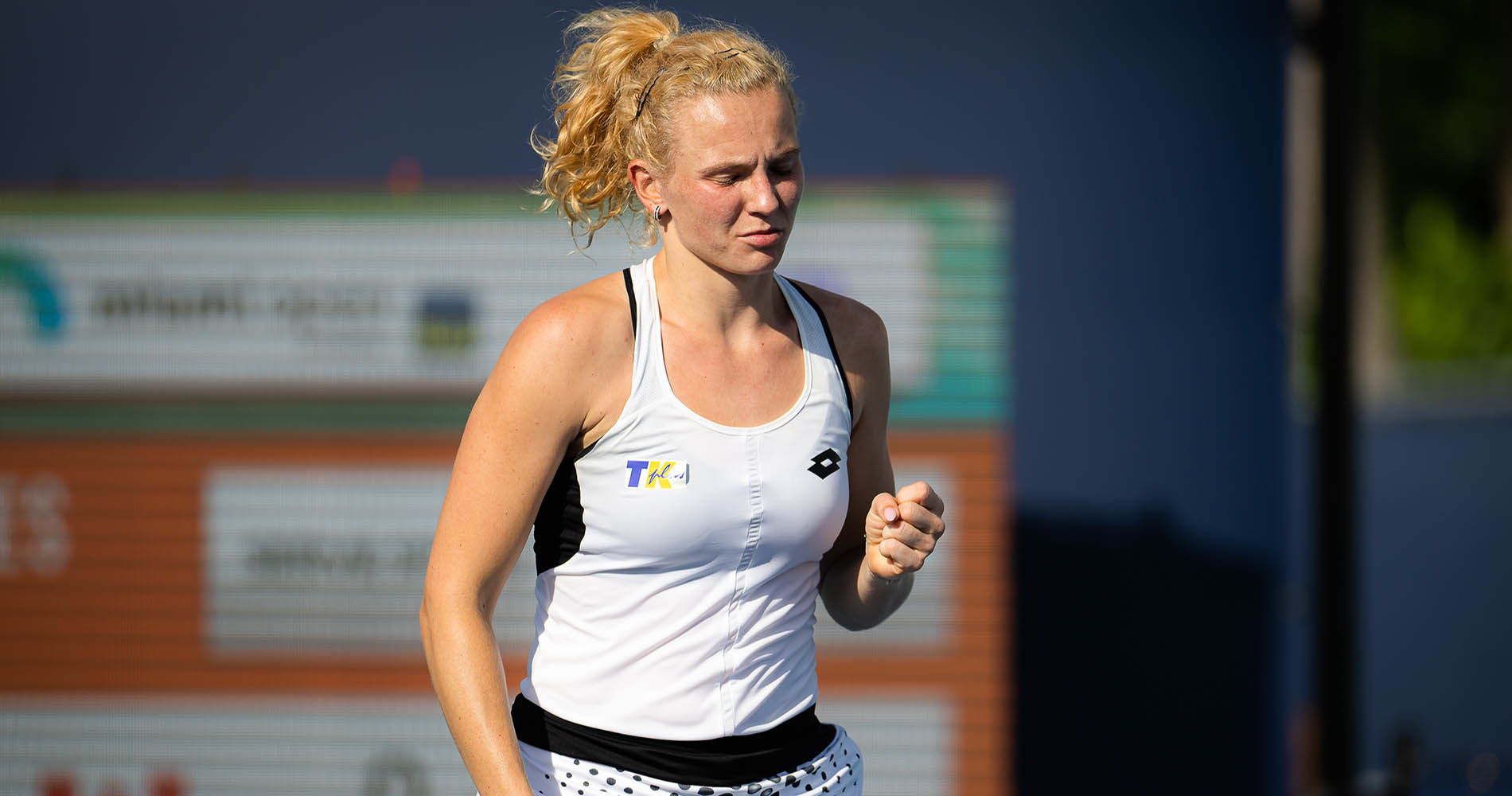The Roland Garros Effect: Analyzing The Impact On Non-French Players

Table of Contents
The Clay Court Challenge
The Roland Garros tournament is synonymous with clay courts, a surface presenting unique challenges for players accustomed to faster surfaces like grass or hard court. The high bounce and slow speed of clay necessitate a different style of play, demanding significantly more physical and mental stamina. Longer rallies are the norm, requiring players to demonstrate exceptional endurance and footwork. The increased friction also leads to more sliding, increasing the risk of injury and demanding superior leg strength and agility.
- Higher error rates on clay: The slower pace allows for more time for opponents to react, increasing the margin for error. A slightly off-center shot on clay is punished more severely than on faster surfaces.
- Importance of footwork and court coverage: Exceptional court coverage and precise footwork are paramount on clay to reach every ball. Players must be agile and possess superior stamina.
- Different shot selection strategies: Aggressive net play is less effective on clay; baseline rallies dominate, requiring players to develop a potent topspin game.
- Examples of successful adaptation: Rafael Nadal's dominance on clay is a testament to masterful adaptation; conversely, many serve-and-volley specialists struggle to translate their skills effectively to the clay courts of Roland Garros.
Climate and Acclimatization
The Parisian spring, while beautiful, presents its own set of challenges for non-French players. Temperature fluctuations and humidity levels can significantly impact performance, particularly for those arriving from different climates. Acclimatization becomes crucial; players who fail to prepare adequately can find themselves struggling with fatigue, muscle cramps, and reduced concentration.
- Impact of jet lag on performance: Long-haul flights can disrupt players' circadian rhythms, impacting their sleep, energy levels, and overall performance in the early rounds.
- Importance of pre-tournament practice on clay courts: Prior practice on clay is essential to adjust to the unique demands of the surface and acclimatize to the climate conditions.
- Strategies for managing heat and humidity: Players must adopt strategies for hydration, cooling down, and maintaining energy levels in challenging weather conditions.
- Examples of climate-related struggles: Many players from colder climates have historically struggled to adjust to the warmer, humid conditions of Paris, impacting their performance significantly.
Crowd Dynamics and Home Advantage
The Roland Garros crowd is legendary for its passion and fervent support of French players. This creates a distinct home advantage that can significantly impact the mental game of non-French competitors. The enthusiastic roars for French players and the occasional groans directed at their opponents can create a hostile environment, placing immense psychological pressure on international players. Furthermore, there is a perception, even if subjective, that the crowd's energy can subtly influence refereeing decisions.
- The psychological impact of playing in a hostile environment: This can lead to increased anxiety, loss of focus, and difficulty in executing shots under pressure.
- Strategies for managing crowd pressure: Experienced players develop strategies to block out the crowd noise and focus on their own game, using mental resilience techniques to minimize the negative influence.
- The impact of crowd noise on concentration and focus: The constant noise can disrupt concentration and hinder the ability to execute precise shots.
- Examples of players thriving despite crowd pressure: Novak Djokovic, despite facing considerable crowd pressure, has demonstrated the ability to manage the environment and maintain his focus.
Strategic Adaptations and Tactical Adjustments
The Roland Garros Effect necessitates strategic adaptations. Non-French players must adjust their game style to effectively compete on the clay. This requires tactical flexibility, the ability to adjust strategies based on opponent strengths and weaknesses and court conditions.
- Adapting serve and volley tactics to clay: This strategy is generally less effective on clay; players often need to adjust their serve and net approach styles to accommodate the slower pace.
- Changing baseline strategies to account for longer rallies: Players must develop the endurance and tactical awareness to sustain long baseline rallies and seize opportunities effectively.
- Importance of net play adjustments: Although less frequent on clay, calculated net approaches can still be effective, requiring a careful balance between aggression and defensive strategy.
- Examples of successful strategic adaptations: Many successful players at Roland Garros demonstrate the ability to adapt their game, blending powerful baseline play with occasional net approaches to keep their opponents guessing.
Conclusion
The Roland Garros Effect presents significant challenges for non-French players, impacting performance in multifaceted ways. From the unique demands of the clay court surface and the impact of the Parisian climate to the passionate crowd and the necessity for strategic adaptations, the tournament presents a unique test of skill, mental fortitude, and adaptability. Reiterating the significance of the Roland Garros Effect on international players' performance and rankings highlights the importance of understanding these factors. We encourage readers to further research the complexities of the Roland Garros Effect and its impact on various players' careers. Explore specific player examples, or delve into the historical data surrounding the tournament. Understanding the Roland Garros Effect is crucial for comprehending the nuances of professional tennis and the paths to success at this prestigious Grand Slam.

Featured Posts
-
 Latest Measles Outbreak Information Confirmed Cases In The U S
May 30, 2025
Latest Measles Outbreak Information Confirmed Cases In The U S
May 30, 2025 -
 The Nissan Primera Electric Future Or Distant Memory
May 30, 2025
The Nissan Primera Electric Future Or Distant Memory
May 30, 2025 -
 Raducanus Powerful Performance Secures Last 16 Spot In Miami
May 30, 2025
Raducanus Powerful Performance Secures Last 16 Spot In Miami
May 30, 2025 -
 House Of Kong Gorillazs 25th Anniversary Exhibition And London Concerts
May 30, 2025
House Of Kong Gorillazs 25th Anniversary Exhibition And London Concerts
May 30, 2025 -
 Analyzing Dara O Briains Brand Of Reason And Humor
May 30, 2025
Analyzing Dara O Briains Brand Of Reason And Humor
May 30, 2025
